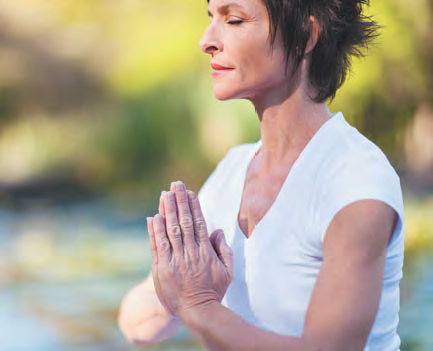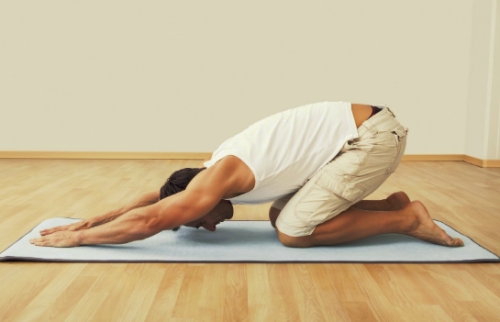News And PoliticsCommunications And EntertainmentSports And FitnessHealth And LifestyleOthersGeneralWorldnewsBusiness And MoneyNigerianewsRelationship And MarriageStories And PoemsArts And EducationScience And TechnologyCelebrityEntertainmentMotivationalsReligion And PrinciplesNewsFood And KitchenHealthPersonal Care And BeautyBusinessFamily And HolidaysSportsStoriesIT And Computer ScienceRelationshipsLawLifestyleComedyReligionLifetipsEducationMotivationAgriculturePoliticsAnnouncementUSMLE And MedicalsMoneyEngineeringPoemsSocial SciencesHistoryFoodGive AidBeautyMarriageQuestions And AnswersHobbies And HandiworksVehicles And MobilityTechnologyFamilyPrinciplesNatureQuotesFashionAdvertisementChildrenKitchenGive HelpArtsWomenSpiritualityQuestions AnsweredAnimalsHerbal MedicineSciencePersonal CareFitnessTravelSecurityOpinionMedicineHome RemedyMenReviewsHobbiesGiveawayHolidaysUsmleVehiclesHandiworksHalloweenQ&A
Top Recent
Loading...
The Health And Mental Benefits Of Yoga
5 years ago
~4.8 mins read
Tone and strengthen your body while you lower blood pressure … ease back pain … reduce the risk of heart disease … and improve your memory with YOGA!
Yoga is more than just a workout—it’s actually a combination of four components:
1. Postures (like tree pose)
2. Breathing practices
3. Deep relaxation
4. Meditation
These four components can transform your health on many different levels.
In today’s 24/7 world with shocking news bombarding us, electronic devices beeping for attention, and an inbox full of emails that seem to need an immediate reply, it’s no wonder stress levels are at an all-time high. In fact, research shows 90% of all doctor visits are linked to stress-related problems.
Yoga can be a perfect remedy. It’s one form of exercise that helps relieve stress while improving strength, balance, flexibility, and overall health.
Yoga works across multiple systems in your body at one time to help:
1. Dramatically ease lower back pain and even alleviate arthritis pain
2. Lower the need for diabetes medications by as much as 40%
3. Rev up your immunity by raising levels of disease-fighting antioxidants in your body
4. Switch on genes that promote health — works even if you’re a beginner
5. Reduce depression, chronic pain, and even improve PTSD symptoms
6.
Lower your risk of falling and help you regain your balance if you stumble
And you may even be able to delay the onset of Alzheimer’s disease and fight age-related declines in memory through the meditation component of yoga.
In fact, yoga does so much for your health that studies show people who do yoga use 43% fewer medical services, and they save anywhere from $640 to more than $25,000!
Yoga promotes physical health in multiple different ways. Some of them derive from better stress management. Others come more directly from the physical movements and postures in yoga, which help promote flexibility and reduce joint pain.
Following are some of the physical benefits of yoga that have a growing body of research behind them.
1. Back pain relief
Back pain is one of the most common health problems in the United States. Four out of five Americans will suffer from it at some point. But yoga appears to help.
A 2013 meta-analysis of 10 randomized controlled trials found "strong evidence for short-term effectiveness and moderate evidence for long-term effectiveness of yoga for chronic low-back pain." In fact, the American Society of Pain urges physicians to consider recommending yoga to patients with long-term pain in the lower back.
While it is tempting to stay in bed when your back hurts, doctors no longer recommend extended bed rest. Although lying in bed does minimize stress on the lumbar spine, it also causes muscles to lose conditioning, among other problems.
In general, the sooner you can get up and get moving, the faster you will recover. Yoga helps alleviate back pain by increasing flexibility and muscle strength. Relaxation, stress reduction, and better body awareness may also play a role.
In one study, published in the journal Spine, people with back pain who did two 90-minute sessions of yoga a week for 24 weeks experienced a 56% reduction in pain. They also had less disability and depression than people with back pain who received standard care, such as pain medication.
The results also suggested a trend toward the use of less pain medication in those who did yoga. When the researchers followed up with the participants six months after the study, 68% of the people in the yoga group were still practicing yoga an average of three days a week for an average of 33 minutes per session. That's a good indicator that they found yoga to be helpful.
2. Less arthritis pain
Exercise has been shown to help alleviate the pain and stiffness associated with osteoarthritis; however, these symptoms can make it difficult to be active in the first place.
Yoga offers a gentle form of exercise that helps improve range of motion and strengthen the muscles around painful joints.
In a 2014 study of 36 women with knee osteoarthritis, those who did yoga experienced significant improvements in their symptoms compared with women who didn't do yoga. The yoga group had a 60-minute class one day a week and then practiced at home on several other days, averaging 112 minutes of yoga a week on their own.
After eight weeks, they reported a 38% reduction in pain and a 35% reduction in stiffness, while the no-yoga group reported worsening symptoms.
People with rheumatoid arthritis, an autoimmune disorder, may also benefit. In a 2015 study, women with rheumatoid arthritis reported improvements in their physical health, walking ability, pain levels, energy, and mood, and had significantly fewer swollen and tender joints, after doing two hour-long yoga classes a week for eight weeks.
In addition to the conditions listed above, preliminary research also shows that yoga may help with
1. Migraines
2. Osteoporosis
3. Balance and mobility issues
4. Multiple sclerosis
5.
Inflammatory bowel disease
6. Fibromyalgia
7. ADHD
Here's a breathing technique and yoga move to get you started.
1. Release tension with Abdominal Breathing

Abdominal breathing is a basic yoga breath that all beginners should start with. This technique gets you to breathe deeply to create abdominal movement.
To start:
Lie on your back with one or both hands on your abdomen.
Breathe slowly and deeply, drawing air into the lowest part of your lungs so your hand rises.
Once you can do this breath lying down, you can give it a try while sitting or standing. Try this technique while you practice a posture, while meditating, or any time you want to calm down.
2. Ease into Yoga
Here's a standard stretch that you’ll link with your breath for a more mindful practice.
Starting position:
Sit or stand with your feet slightly apart; arms relaxed at sides.
Movement:
As you exhale, slowly lower your chin toward your chest so you feel a gentle stretch in the back of your neck.
As you inhale, raise your head backward, looking up to the ceiling. Go only as far as comfortable, feeling a gentle stretch in the front of your neck.
That’s one rep. Do 3 reps.
Where you ll feel it: Back and front of neck.
Note: If you are elderly, have any neck problems, or have high blood pressure, check with your doctor before doing this move.
Yoga is more than just a workout—it’s actually a combination of four components:
1. Postures (like tree pose)
2. Breathing practices
3. Deep relaxation
4. Meditation
These four components can transform your health on many different levels.
In today’s 24/7 world with shocking news bombarding us, electronic devices beeping for attention, and an inbox full of emails that seem to need an immediate reply, it’s no wonder stress levels are at an all-time high. In fact, research shows 90% of all doctor visits are linked to stress-related problems.
Ad
Yoga works across multiple systems in your body at one time to help:
1. Dramatically ease lower back pain and even alleviate arthritis pain
2. Lower the need for diabetes medications by as much as 40%
3. Rev up your immunity by raising levels of disease-fighting antioxidants in your body
4. Switch on genes that promote health — works even if you’re a beginner
5. Reduce depression, chronic pain, and even improve PTSD symptoms
6.
Ad
And you may even be able to delay the onset of Alzheimer’s disease and fight age-related declines in memory through the meditation component of yoga.
In fact, yoga does so much for your health that studies show people who do yoga use 43% fewer medical services, and they save anywhere from $640 to more than $25,000!
Yoga promotes physical health in multiple different ways. Some of them derive from better stress management. Others come more directly from the physical movements and postures in yoga, which help promote flexibility and reduce joint pain.
Following are some of the physical benefits of yoga that have a growing body of research behind them.
1. Back pain relief
Back pain is one of the most common health problems in the United States. Four out of five Americans will suffer from it at some point. But yoga appears to help.
Ad
While it is tempting to stay in bed when your back hurts, doctors no longer recommend extended bed rest. Although lying in bed does minimize stress on the lumbar spine, it also causes muscles to lose conditioning, among other problems.
In general, the sooner you can get up and get moving, the faster you will recover. Yoga helps alleviate back pain by increasing flexibility and muscle strength. Relaxation, stress reduction, and better body awareness may also play a role.
In one study, published in the journal Spine, people with back pain who did two 90-minute sessions of yoga a week for 24 weeks experienced a 56% reduction in pain. They also had less disability and depression than people with back pain who received standard care, such as pain medication.
Ad
2. Less arthritis pain
Exercise has been shown to help alleviate the pain and stiffness associated with osteoarthritis; however, these symptoms can make it difficult to be active in the first place.
Yoga offers a gentle form of exercise that helps improve range of motion and strengthen the muscles around painful joints.
In a 2014 study of 36 women with knee osteoarthritis, those who did yoga experienced significant improvements in their symptoms compared with women who didn't do yoga. The yoga group had a 60-minute class one day a week and then practiced at home on several other days, averaging 112 minutes of yoga a week on their own.
Ad
People with rheumatoid arthritis, an autoimmune disorder, may also benefit. In a 2015 study, women with rheumatoid arthritis reported improvements in their physical health, walking ability, pain levels, energy, and mood, and had significantly fewer swollen and tender joints, after doing two hour-long yoga classes a week for eight weeks.
In addition to the conditions listed above, preliminary research also shows that yoga may help with
1. Migraines
2. Osteoporosis
3. Balance and mobility issues
4. Multiple sclerosis
5.
Ad
6. Fibromyalgia
7. ADHD
Here's a breathing technique and yoga move to get you started.
1. Release tension with Abdominal Breathing

Abdominal breathing is a basic yoga breath that all beginners should start with. This technique gets you to breathe deeply to create abdominal movement.
To start:
Lie on your back with one or both hands on your abdomen.
Ad
Breathe slowly and deeply, drawing air into the lowest part of your lungs so your hand rises.
Once you can do this breath lying down, you can give it a try while sitting or standing. Try this technique while you practice a posture, while meditating, or any time you want to calm down.
2. Ease into Yoga
Here's a standard stretch that you’ll link with your breath for a more mindful practice.
Starting position:
Sit or stand with your feet slightly apart; arms relaxed at sides.
Movement:
As you exhale, slowly lower your chin toward your chest so you feel a gentle stretch in the back of your neck.
As you inhale, raise your head backward, looking up to the ceiling. Go only as far as comfortable, feeling a gentle stretch in the front of your neck.
Ad
That’s one rep. Do 3 reps.
Where you ll feel it: Back and front of neck.
Note: If you are elderly, have any neck problems, or have high blood pressure, check with your doctor before doing this move.
Loading...

